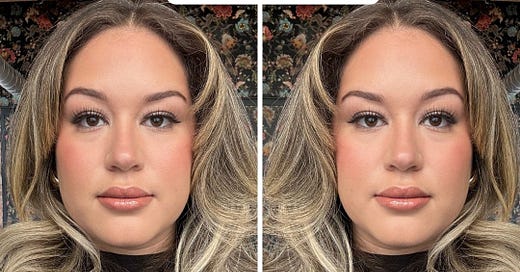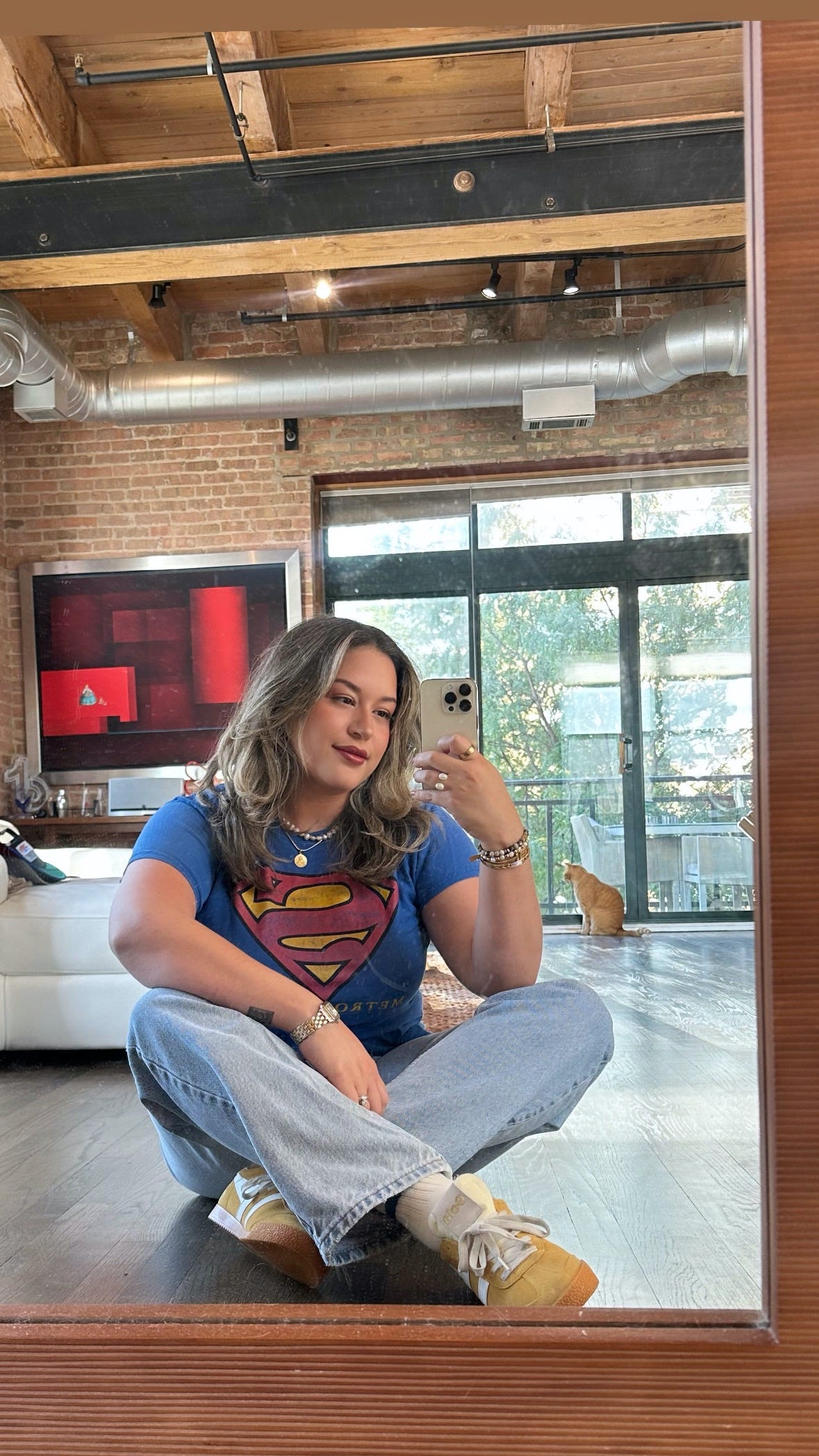If you've ever looked in the mirror and liked your reflection, then immediately taken a selfie and hated it, you know exactly how frustrating that feels. I remember thinking, "I'm not even shooting for supermodel status—I just want to look like myself” and, well... maybe a little better.
For the longest time, I genuinely believed I was the problem. Because, hello, every selfie had one thing in common: me.
Turns out, I couldn't have been more wrong. (My face was innocent!)
Welcome to the introductory chapter of the Selfie Workshop, a four-week special designed to finally clear things up. Today we're diving into why your selfies look so different from your mirror reflection, and—most importantly—how you can fix it. We'll also cover the essential selfie principles that'll set you up for success throughout the rest of this four-week journey. Make sure you’re subscribed to get the other workshop straight to your inbox! 💌
The first big "aha" moment I had was realizing I wasn't comparing apples to apples. Or reflections to selfies. There are actually three key factors shaping the way we see ourselves—and understanding them changes everything.
Starting with this mildly terrifying truth: your mirror reflection isn't even how other people see you. Yep. Let that sink in.
I’m guessing you might relate to more than one. (Don't worry, same here.)
Here’s what's actually happening: When photons—rays of light—coming from an object (like your cute face) strike the smooth surface of a mirror, they bounce back at exactly the same angle they arrived. Your eyes catch these reflected photons and perceive them as a reversed, laterally inverted image, flipping your appearance horizontally. Imagine you're raising your right hand; in your mirror reflection, it'll appear as though you're raising your left.
This flipped reflection is what you've become accustomed to seeing daily, so it feels perfectly normal. On the other hand, cameras capture images exactly as others perceive you, without this lateral inversion.
To make matters worse, we're also seeing ourselves in 3D when we look in a mirror, compared to a flat 2D image captured by a camera. Mirrors reflect depth, allowing our eyes to see dimension, shadows, and highlights naturally, giving our face shape and definition. Plus, is real life, you are moving too. While photos, however, flatten everything into two dimensions, often distorting proportions and making features appear differently than they do in real life. This loss of depth perception is another reason why selfies can feel unflattering or unfamiliar.
Finally, let's talk about how cameras see us differently compared to our eyes. Camera lenses, especially those on smartphones, can distort proportions depending on their angle and distance. If you've ever noticed your nose appearing larger or your forehead wider in a selfie, you're not imagining it.
Wide-angle lenses (like those on most phone cameras) tend to exaggerate the features closest to the lens, which can make certain parts of your face seem disproportionately large or oddly shaped. Our eyes don't have this issue because they naturally adjust and balance the perspective, resulting in a more accurate and pleasing image of ourselves. This lens distortion is another big reason selfies often feel "off" or less attractive than your mirror reflection.
How to Fix It
Now that you know the truth—that your mirror reflection is reversed, photos flatten your beautiful 3D face into 2D, and camera lenses distort your features—I think it’s safe to officially declare:
IT’S NOT YOU.
(Feel free to say it again louder for the people in the back.)
But let's get practical, because knowing the why only helps if we can do something about it. And lucky for us, we absolutely can.
To start, let’s break down the solutions step-by-step, addressing each of these three issues directly:





